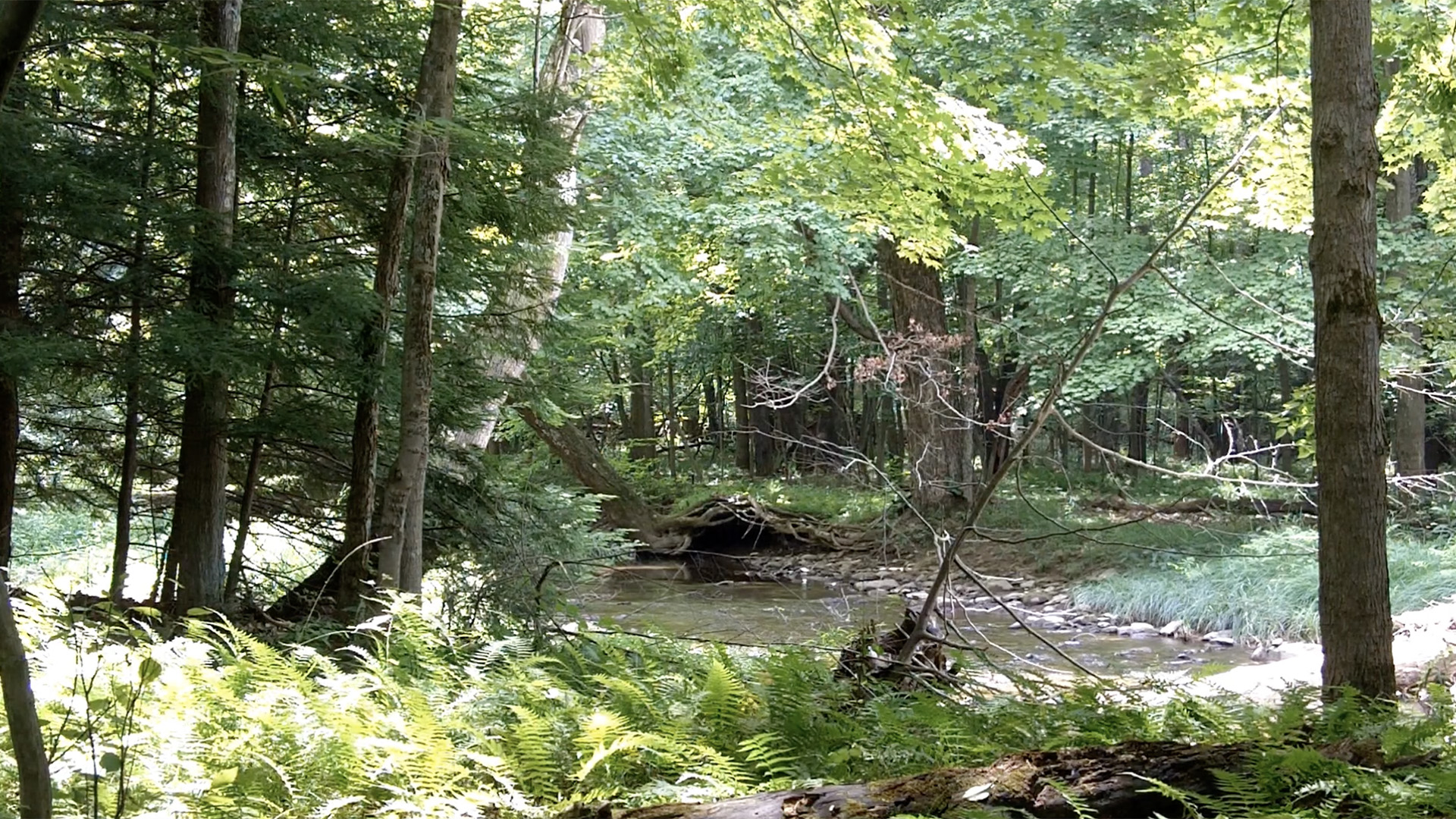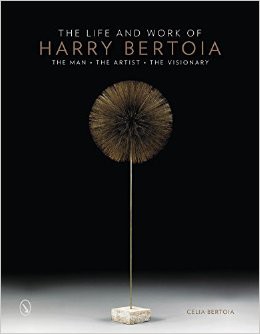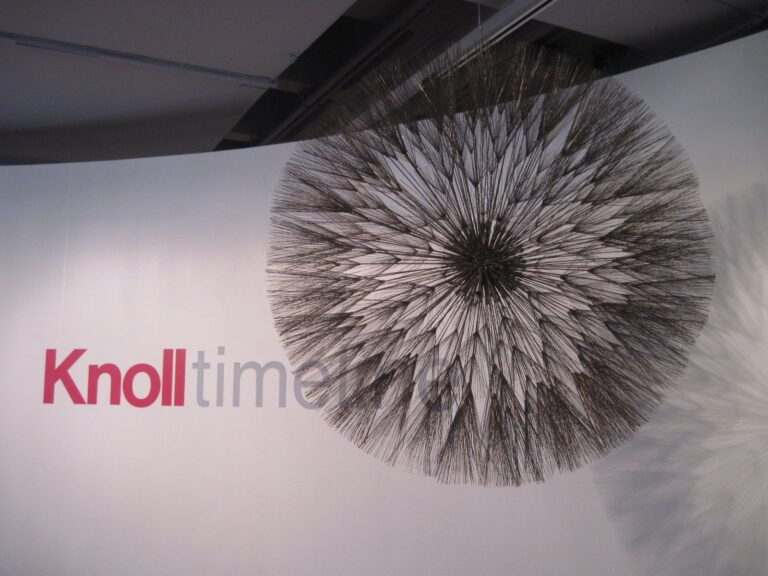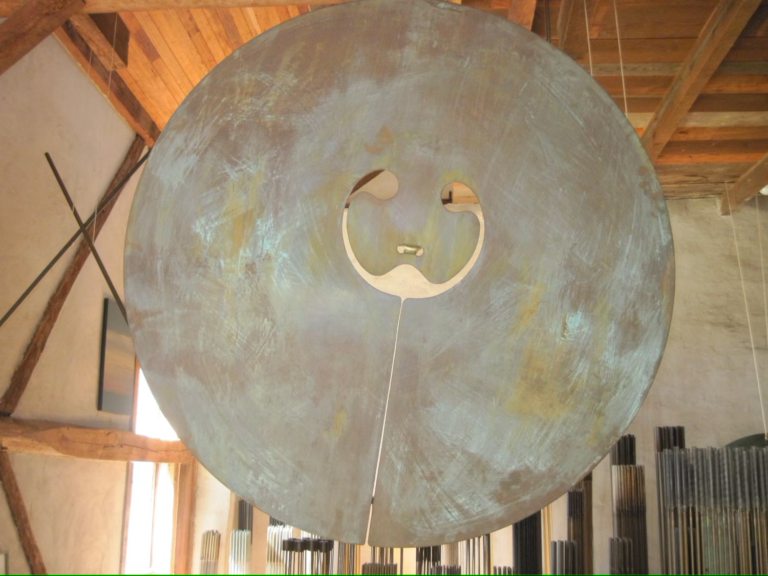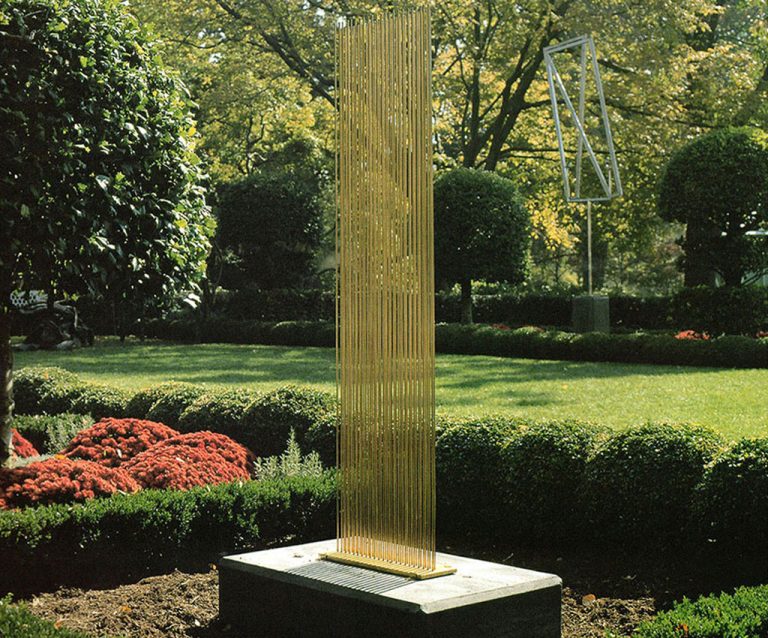Pennsylvania Pastimes
Traveling to Pennsylvania is always bittersweet because of my early history there, but this time was more sweet than bitter. The weather was wonderful, the company stellar, and the reception fantastic.
I had a chance to visit Rago Art Auction, headed by David Rago and his wife Suzanne Perrault, and view a few Bertoias as well as hundreds of other amazing items. They run a large respectable business in Lambertville, New Jersey, housed in three spacious buildings.
Lambertville is just a few miles from New Hope, across the Delaware River in Pennsylvania. The Nakashimas live in New Hope, and Harry Bertoia and family lived there temporarily in 1950.
Getting back to Rago, David showed us around, taking time out of his very busy schedule, and impressed me with his integrity and charisma. I enjoyed getting the full view of the hanging willows that used to be in a Seattle bank. He has dozens of them!
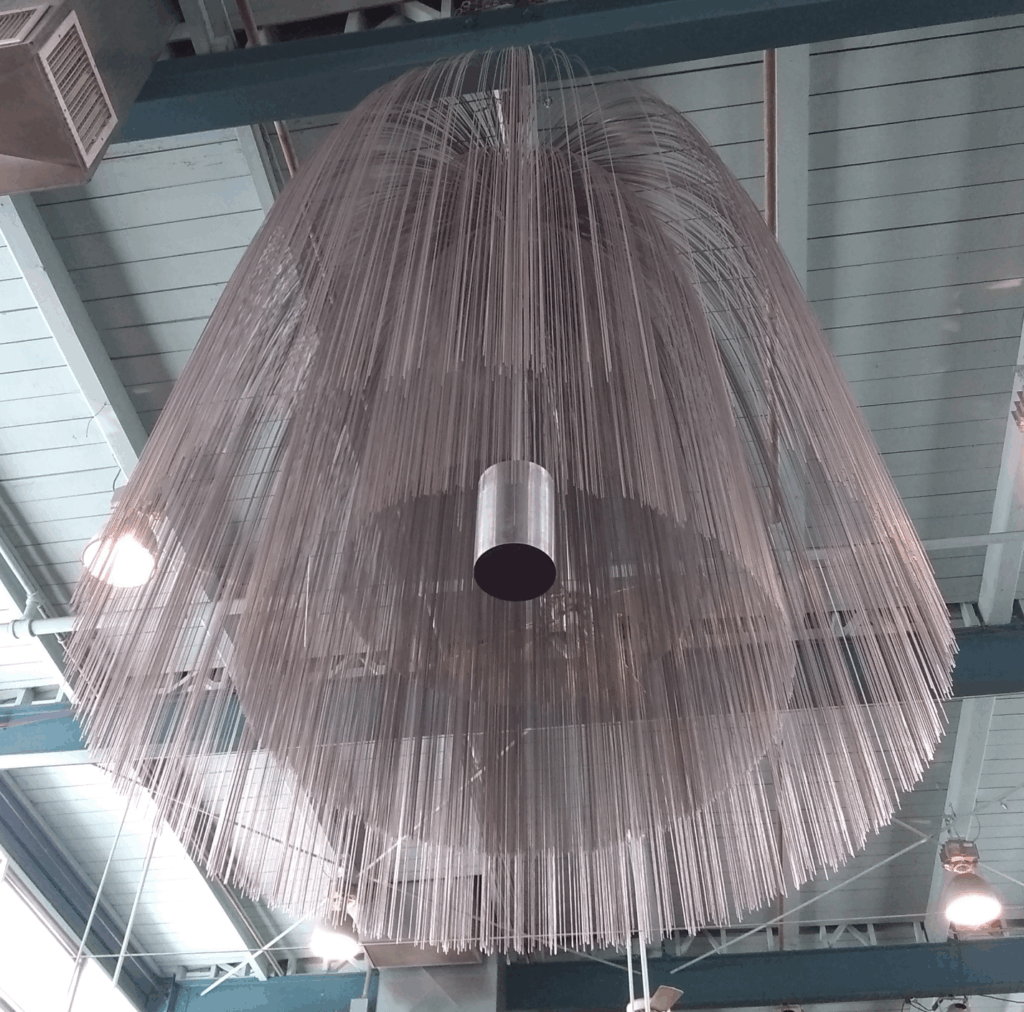
I was able to spend time with two valuable HBF board members, Bill Shea and Bill Springer, and another important supporter, Eugene Schwartz. Bill Shea is in the midst of researching and writing a book about the Bertoia chair designs. He has a plethora of detailed information about the chairs; everything from which connectors were used when to the diameter of the wire at different years or in various countries. Bill Springer once had a gallery near Allentown, was partnered with Lesta Bertoia, my sister, and knew both Harry and Brigitta. He is as passionate about Bertoia as I am, so it is always a treat to catch up on our latest Bertoia discoveries and questions. Both Bills are a tremendous addition to the foundation.
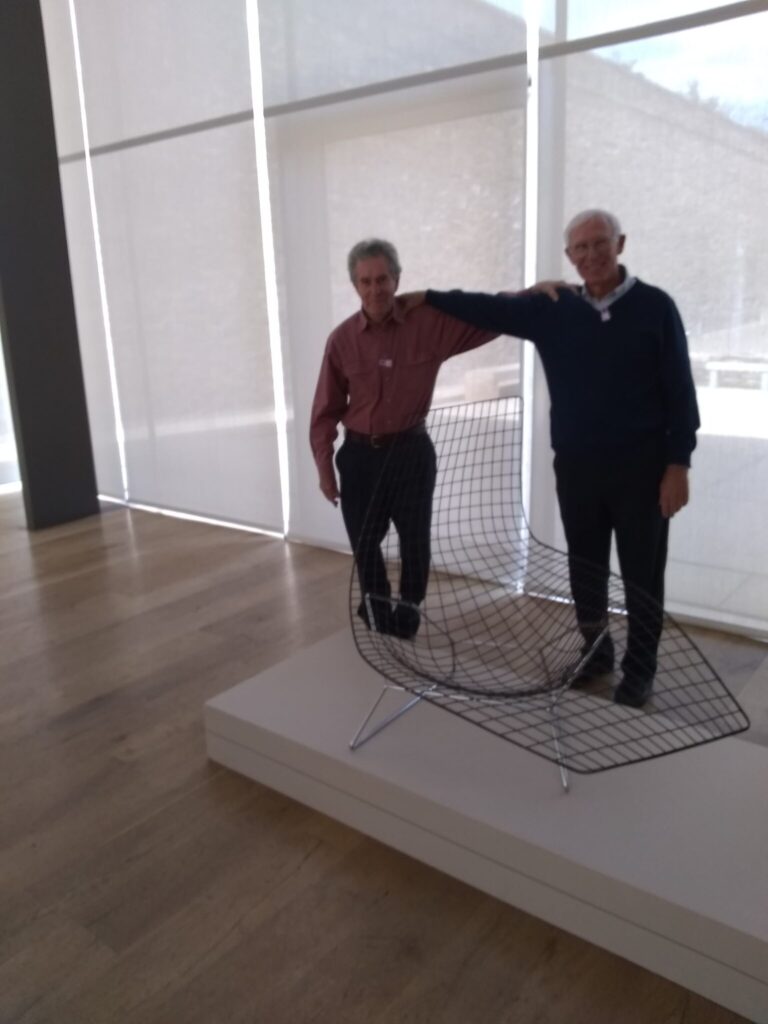
Eugene is always ready to assist in any way and once gallantly drove me in and out of New York City during rush hour! We got to know each other quite well in those hours.
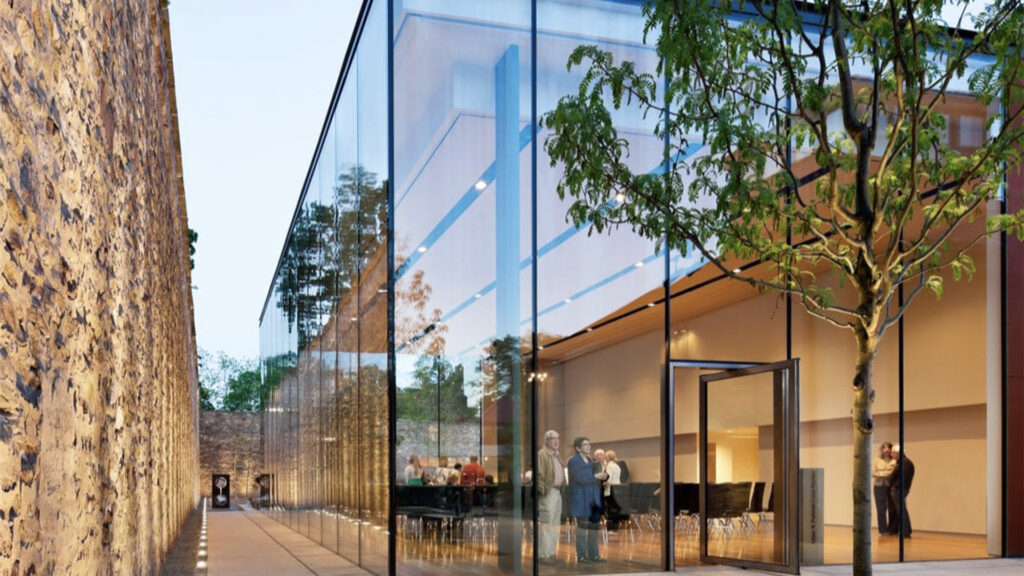
The Michener Museum of Art, opened in 1988 in the old prison building in Doylestown, Pennsylvania, had “The Art of Seating: 200 Years of American Design” when we visited, and still has the exhibition “Nakashima Looks.”
“The Art of Seating” has been traveling around the country and I first became aware of it in Chicago. Chairs from the Victorian era all the way up to current modernist chairs lay out part of America’s design history in a fascinating show.
The “Nakashima Looks: Studio Furniture at the Michener” complements the show with local artisans who all were inspired by Nakashima, plus a few of Mira (his daughter) Nakashima’s own beautiful creations. The Michener has an entire room devoted to Nakashima’s furniture. The Michener is always worth visiting!
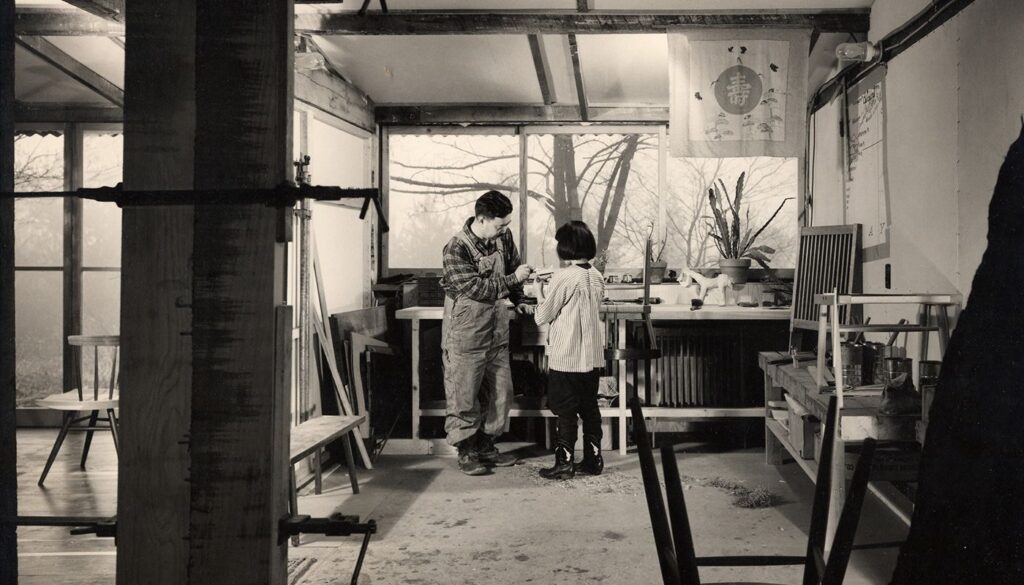
The audience for our afternoon presentation at the Michener was an educated, appreciative one which filled the room. Mira Nakashima was present, as was a crew from Rago including David Rago, as well as several museum members. We discussed the development of the chairs from Eames days to post Knoll, which is always an amazing intertwined trail, but the real treat came when Bill 1 and Bill 2 (as we affectionately label them) spoke about a unique prototype.
Bill Springer is the owner of an original Harry Bertoia prototype of the Asymmetric Chaise Lounge which he graciously brought to the lecture. It was created in 1952 along with the other Bertoia chairs, but due to its complex nature, was not mass produced until 2005. The path of that prototype has wonderful twists and turns that ultimately resulted in the Knoll introduction of the chaise at the Milan furniture festival in 2005. Despite an $8000+ price tag, the first year’s production sold out at the convention.
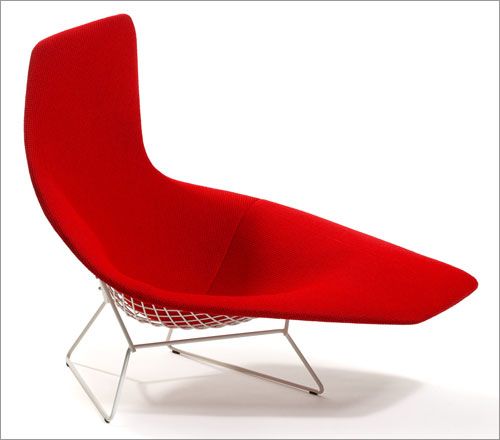
Both Bills had delicious details to add, such as Bill 2 being invited to a private auction of it and bidding every dollar he had available (not very much) and crazily winning the bid!
More tidbits are in The Life and Work of Harry Bertoia, 2015.

My gracious hostess, Marion Siegman, a research professor at Jefferson University, invited me to stay at her New Hope country home which borders the Delaware River. Jogging along the canal of the Delaware, where mules used to tow barges, afforded gorgeous views and springtime lusciousness that only the east provides.

Marion’s town house in Philadelphia contained just the modern look that I adore, plus two beautiful Bertoias. She had been a bold 20-something when she approached my father and asked if she could hear a Sonambient barn concert. She and a friend were gifted a private concert in 1978, just months before Harry passed. She remembers it vividly and says it affected her life ever after. Harry had that effect on many people.
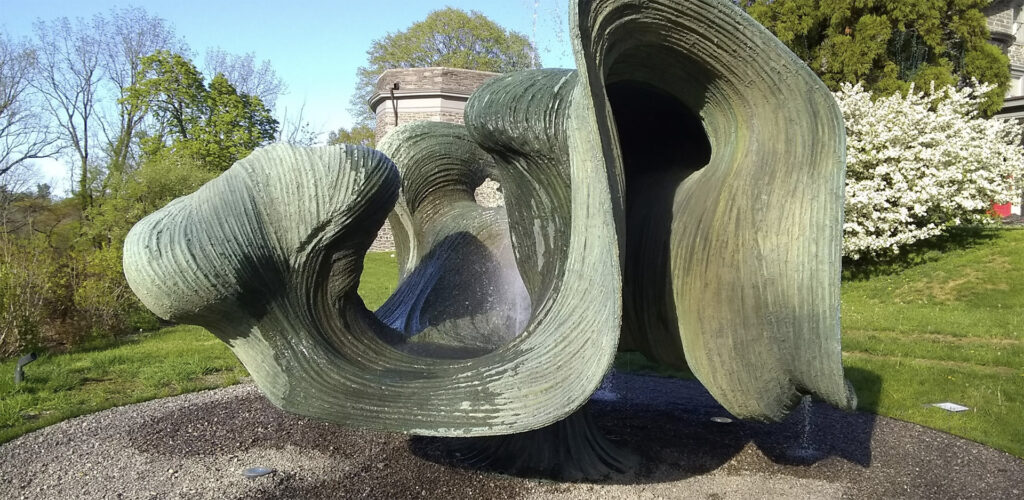
The history and development of the tonal sculptures was the topic of the Woodmere Museum presentation. This is one that I’d like to write up in a separate blog, as it deserves full exploration.
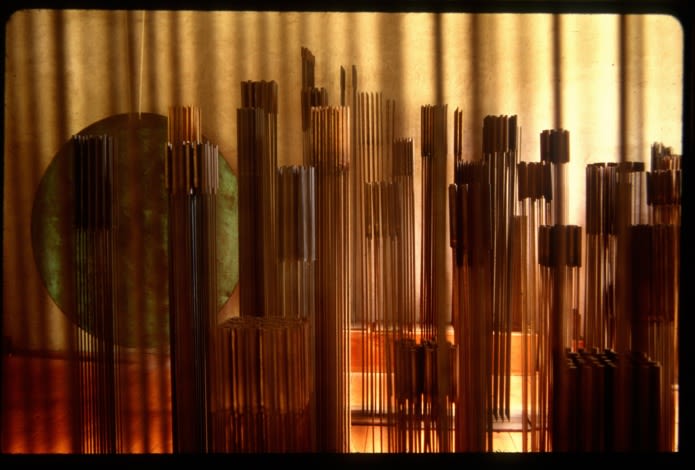
It took about ten years for Harry to discover the best techniques to construct the sounding sculptures, and then another ten years to perfect their tones, tops, and tenacity. We ended the evening with a viewing of SONAMBIENTS: the Sounding Sculpture of Harry Bertoia, the Eger film of 1971.
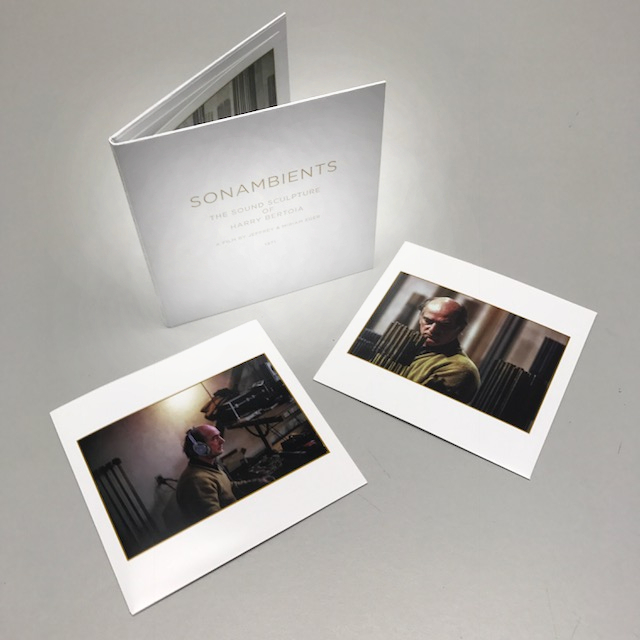
It is a powerful peek into the Sonambient barn and Harry’s relationship to his toning sculptures. We look forward to the day when the Sonambient Barn collection will be publicly viewed and heard once again, hopefully not too far off.

